- Sep 11
- Sep 18
- Sep 23
- Oct 02
- Oct 09
- Oct 16
- Oct 23
- Oct 30
- Nov 06
- Nov 13
- Feb 19
- Feb 19
- Feb 26
- Mar 12
- Mar 26
- Apr 02
- Apr 09
- Apr 16
- Apr 23
- Apr 30
Meshing scientific understanding with ecological data to enhance management and conservation
Main Speaker: Clint Leach
Assistant Unit Leader , Nebraska Cooperative Fish and Wildlife Research Unit
Date: 9/11/2024
Time: 3:30 PM
Location: 107 South Hardin Hall (Auditorium)
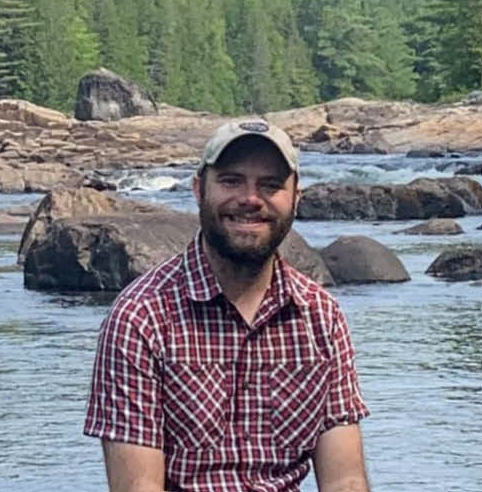
Abstract
Monitoring and managing population spread, in the context of both species recovery and invasion, presents a number of quantitative challenges. Inference often requires linking multiple disparate data sets, and additional data are often costly to collect. Moreover, management decisions frequently require interpretable inference on ecologically meaningful quantities. Bayesian hierarchical methods, together with mechanistic models, offer a cohesive framework to address many of these challenges. We apply these approaches to understand the spread of sea otters across Glacier Bay, Alaska and the resulting changes in the nearshore community induced by sea otter predation.Speaker's Bio
Prior to joining the Nebraska Cooperative Fish and Wildlife Research Unit, Clint was a postdoc at Colorado State University, where he also did his PhD in ecology. Clint is broadly interested in statistical ecology and mechanistic modeling, and his recent work has focused on sea otter predator-prey interactions in Glacier Bay, Alaska, and brown treesnake movement in Guam.Speaker's Contact Information
- cleach8@unl.edu
Video
Bridging Differences and Finding Solutions: The Need and Opportunity for Universities to Partner with Our Communities for Sustainable Solutions
Main Speaker: Lara Fowler
Director of Penn State Sustainability and Chief Sustainability Officer , The Pennsylvania State University
Date: 9/18/2024
Time: 3:30 PM
Location: In Person Cancelled -- Only Zoom
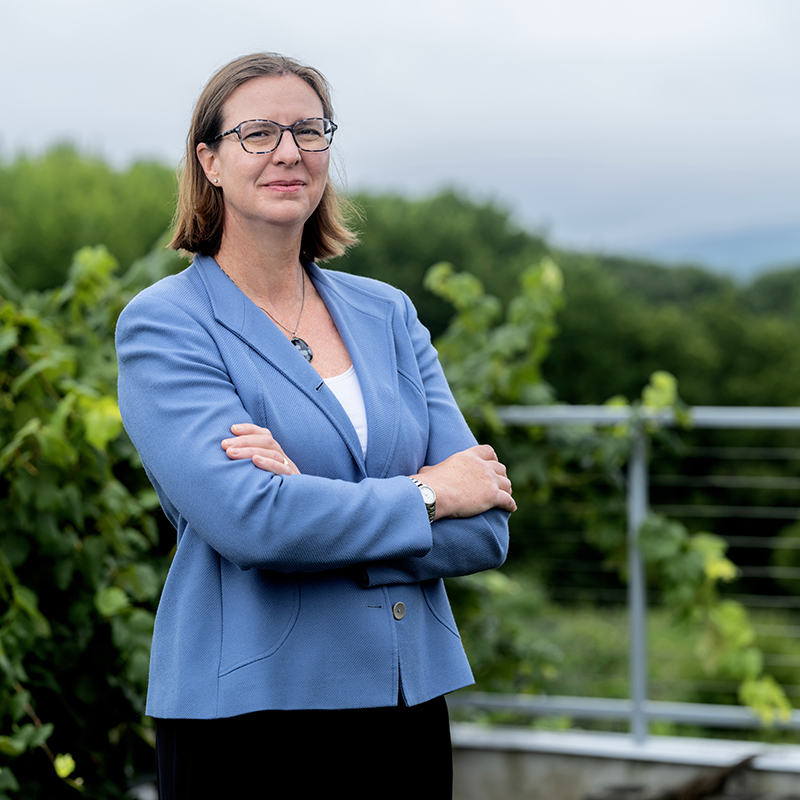
Abstract
As the number of global challenges grow and our societies seem to become more and more divided, what role do universities play in helping bridge these differences and find solutions? Meeting the land grant need, Penn State is focused on student success, interdisciplinary research, and strong local communities. Lara Fowler, Penn State's Chief Sustainability Officer, will share how Penn State is approaching these challenges though classes like the Sustainable Communities Collaborative and the Local Climate Action Program. After providing this overview, she invites an active discussion with the audience.
Reference Point: The Pennsylvania State University President Neeli Bendapudi helps lead new higher ed council on public-impact research - Read more
Host: Mark Burbach
Speaker's Bio
Lara Fowler is Penn State's Chief Sustainability Officer. In this role, she is fostering more interdisciplinary education and research related to sustainability, helping make Penn State's operations more sustainable-- including working towards a goal of decarbonizing the university by 2035, and meeting the land grant mission of Penn State. Lara has a diverse background. Originally from the Pacific Northwest, she worked with the Oregon Water Resources Department for a number of years, attended University of Washington for law school, and served as a mediator, facilitator, and attorney on complex natural resource issues. She joined Penn State in 2012, where she split her time between Penn State Law and the Penn State Institute of Energy and the Environment. In addition to teaching water law, energy law, negotiation, and mediation, she helped foster interdisciplinary research as well as participating in research projects herself. Lara also served on the Chesapeake Bay Scientific and Technical Advisory Committee for 9 years. In July 2022, she took on the role of Chief Sustainability Officer. In addition to her law degree, Lara has an A.B. from Dartmouth College. She currently serves as the chair of the jury for the Stockholm Junior Water Prize and is a board member for the Chesapeake Bay Journal.
Speaker's Contact Information
- lbf10@psu.edu
Video
Keeping the Wild Cheetah Wild
Main Speaker: Laurie Marker
Founder and Executive Director , Cheetah Conservation Fund
Date: 9/23/2024
Time: 12:00 PM
Location: 901 South Hardin Hall
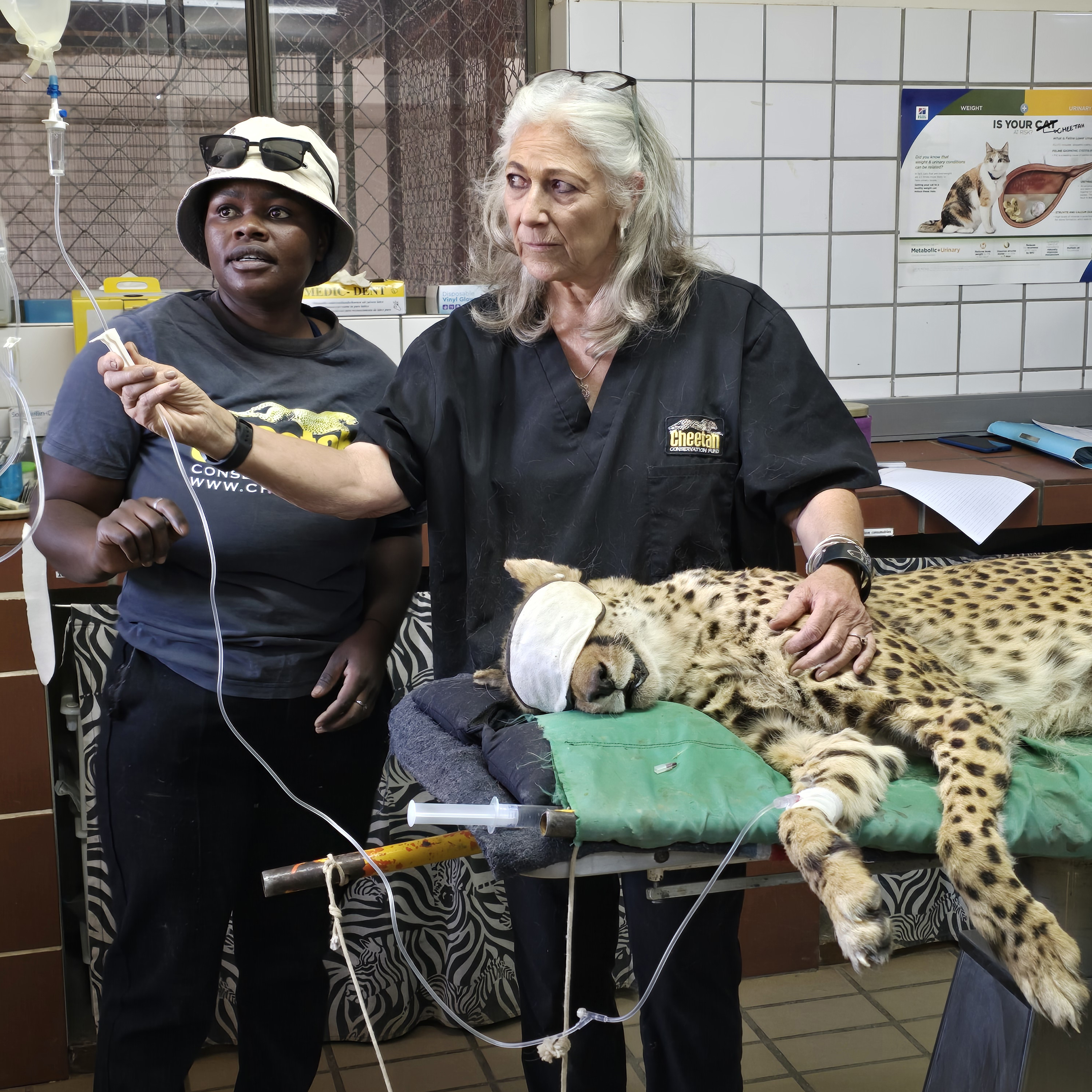
Abstract
Approximately 1,000 of the world’s remaining 7,000 cheetahs are found in Namibia, known as the Cheetah Capitol of the World. However, 90% of Namibia’s cheetahs live on livestock and game farms, outside protected areas, alongside rural farming communities, putting them in conflict with these farming enterprises. Cheetahs and other predators have traditionally been considered vermin and not a valuable component of a healthy ecosystem. During the 1980’s, Namibian livestock and game farmers halved the cheetah population, removing (trapping and killing) nearly 8,000 cheetahs from the landscape. To stop the decline of wild cheetahs, in 1990 the Cheetah Conservation Fund (CCF) was founded, and set up a permanent research and conservation Centre in Namibia. In order to maintain ecosystem balance, conservation strategies have been developed by CCF to encourage sustainable land use while accommodating coexistence with native predator species. From CCFs early research into conflict mitigation, CCF researchers began developing and testing predator-friendly livestock management techniques and tools on CCF’s 158,000-acre integrated Model Farm and Wildlife Reserve such as the use of CCF Livestock Guarding Dogs and integrated livestock and wildlife management training programs called Future Farmers of Africa (FFA). FFA training courses build practical skills, enabling rural Namibians to engage in sustainable livestock farming that provides direct and indirect economic benefits. One of the most-effective predator management techniques CCF has implemented is its Livestock Guarding Dog program. Since 1994, CCF has bred and placed over 800 Anatolian shepherd and Kangal dogs with farmers, at little cost, to help guard farmer’s small stock. The presence of these large dogs, with a loud bark, acts as an avoidance and is usually enough to keep most predators away from flocks. Farmers who use CCF LGDs report a drop in predation rates ranging from 80- 100%, thus reducing pressure on farmers to kill or capture cheetahs and other predators. CCF is adapting these programs to the Horn of Africa to help stop the illegal wildlife pet trade, often caused by human wildlife conflict. CCF Namibia has a well-developed international Internship program which University of Nebraska Natural Resource Management students participate in annually.
Host: Larkin Powell
Speaker's Bio
Dr. Laurie Marker is a Conservation Scientist and one of the world’s leading cheetah experts. She founded Cheetah Conservation Fund (CCF) as the 1st global organization to save wild cheetahs in 1990. In 1974, Dr. Marker began cheetah work at Oregon’s Wildlife Safari, managing the veterinary clinic and developed their cheetah breeding program. In 1977 she conducted pioneering research in Namibia, rewilding a captive born cheetah and learned that livestock farmers were killing hundreds of cheetahs yearly. Over the next decade she traveled to cheetah range countries studying wild cheetahs. In 1982, her collaborative research with the National Cancer Institute and the Smithsonian’s National Zoo, identified the cheetah’s lack of genetic diversity. She joined the Smithsonian in 1988 as Executive Director of NOAHS (New Opportunities in Animal Health Sciences) Center and moved to Washington DC. In 1990, at Namibia’s independence, she set up CCF and relocated to Namibia, to save wild cheetahs, developing the first predator conservation program outside protected areas, and setting the stage for her research into cheetah biology, ecology, conservation and integrated livestock, wildlife, and rangeland management techniques to mitigate conflict. In 1994, Marker developed the livestock guarding dog program, where over 800 Anatolian and Kangal guarding dogs have been bred and placed with farmers to protect their livestock. In addition, she developed CCF’s Research and Education Centre and 158,000-acre private wildlife reserve/ conservancy and model farm, veterinary clinic and genetics laboratory. In 2017, Dr. Marker set up a field base in Somaliland to care for confiscated cheetah cubs from the illegal wildlife pet trade, where they currently have 96 orphan cheetahs. In addition, she has developed programs in the Horn of Africa to help stop the illegal wildlife trade. In 2023, Marker helped with the reintroduction of cheetahs to India, where they had been extinct for over 70 years. Through her work in Namibia, as a global model, she now works to develop range-wide research and community-based programs. Dr. Marker holds a DPhil in Zoology from Oxford University in the UK, is an A.D. White Professor-at-Large Emeritus at Cornell University in New York, and an Adjunct Professor at University of Nebraska in the School of Natural Resource Management. She has more than 170 peer-reviewed scientific papers and four books on cheetah. Marker’s awards including the President’s Award for Conservation (2020) and the Lowell Thomas Award (2010) from the Explorer’s Club, the Tyler Prize for Environmental Achievement (2010), the E.O. Wilson Biodiversity Technology Pioneer Award (2015), and a Hero for the Planet from Time Magazine. She recently received a nomination for the prestigious 2025 Indianapolis Prize. Dr. Marker’s motto is "Save the Cheetah and Change the World".
Speaker's Contact Information
- director@cheetah.org
Video
Science education research in the Netherlands on Faculty Professional Development Leave
Main Speaker: Dr. Jenny Dauer
SNR Associate Director for Undergraduate Education , University of Nebraska-Lincoln | School of Natural Resources
Other Speakers: Dr. Joe Dauer
Date: 10/2/2024
Time: 3:30 PM
Location: 107 South Hardin Hall (Auditorium)

Abstract
The Dauers took their faculty development leave in 2022-23, traveling to Utrecht University, the Netherlands. After identifying researchers at the prestigious Freudenthal Institute for Science and Mathematics Education aligned with both of their research interests, they worked to develop research projects at UNL and UU that would improve their education research and teaching. Joe connected with biology education researchers studying interdisciplinary teaching and learning, which is integrated into UU biology curriculum and fosters creativity in thinking. Joe also advanced his teaching, using the time to revamp his approach to teaching towards mastery grading and putting these innovations into practice after returning to UNL. Jenny collaborated with research studying how students learn through socioscientific issues, particularly connect their learning to a sense of competence for engaging in real world issues to improve their communities. The collaboration supported a new model for SCIL 101 instruction that was awarded an NSF grant in 2024, two paper manuscripts and opportunities for future collaboration.Speaker's Bio
Dr. Joe Dauer is an Associate Professor in the School of Natural Resources. He conducted plant ecology research for a decade before switching his research trajectory to focus on how undergraduate students learn biology. His work on student construction and evaluation of biology models informs his pedagogy through his teaching Introductory Biology and Ecology. Dr. Jenny Dauer is the Associate Director for Undergraduate Education in the School of Natural Resources and an Associate Professor. She conducts science education research on undergraduate students’ science literacy, particularly in the context of SCIL 101 Science and Decision Making for a Complex World. The Dauers also co-teach College Science Teaching for graduate students.
Speaker's Contact Information
- jenny.dauer@unl.edu
Video
Assessing water availability in the drylands using remote sensing and cloud computing
Main Speaker: Nawaraj Shrestha
Geospatial Science Specialist , University of Nebraska-Lincoln | School of Natural Resources
Date: 10/9/2024
Time: 3:30 PM
Location: 107 South Hardin Hall (Auditorium)

Abstract
Water is available in only very limited quantities in the arid and semi-arid regions. Much of the water in the form of precipitation is lost as evapotranspiration while contribution from snowmelt and subsurface processes such as groundwater are not readily measurable. As water is critical in drylands, measuring water availability in space and time is important in understanding and management of drylands. Water availability assessment in the drylands using surface water alone does not reflect important water sources in drylands such as irrigated water, soil moisture conditions due to precipitation, snow melt, and sub-surface flow. Mesic vegetation responds rapidly to change in environmental condition and provides an integrated response to available water in the drylands. Mesic vegetation including wetlands, wet meadows, riparian habitats, playas, and high-elevation rangelands provides valuable insight on water availability in the drylands. We use time series of satellite image archives and cloud computing to measure the inter- and intra-annual water availability in the drylands.Speaker's Bio
I am an Assistant Geoscientist at the conservation survey division at the School of Natural Resources, University of Nebraska-Lincoln. I received Ph.D. in Natural Resource Science from the School of Natural Resources, University of Nebraska-Lincoln. My research mainly uses remote sensing to characterize water resources in the arid and semi-arid regions of the United States. Before joining UNL, I worked as faculty at the Department of Geomatics Engineering at Kathmandu University, Nepal.Video
The application of models linking genetics and environment to inform real-world conservation and management decisions in a rapidly changing world
Main Speaker: Ryan Harrigan
Evolutionary Biologist | Associate Adjunct Professor , Center for Tropical Research | Institute of the Environment and Sustainability | University of California, Los Angeles (UCLA)
Date: 10/16/2024
Time: 3:30 PM
Location: 107 South Hardin Hall (Auditorium)

Abstract
Recent advances in our understanding of how population structure and environmental associations differ across a species range has allowed for new insights as to why variation arises in populations. However, it is still imperative that we use this new information to address real-world, immediate issues these populations face, especially in a rapidly changing world. Although not readily observed in the outward appearance of organisms, an individual’s ability to cope with environmental change is often encoded in their genes. Genomics have the potential to play a pivotal role in conservation not only to detect threats to species and populations but also to restore biodiversity through manageable actions. For this seminar, I will provide an overview of some of the current approaches using genomic data being used to understand the relationship that organisms have with their environment and how we can track these relationships through both space and time. Using real-world examples ranging from studies looking at the annual cycle of Neotropical migratory songbirds to illegally poached pangolins in Africa, I will illustrate how these new approaches can be applied to aid conservation efforts for a wide variety of species and systems. By seminar’s end, I hope to impart the broad utility and excitement these approaches offer to provide evidence for a new line of biological inquiries on a global scale.
Host: Rob Wilson
Speaker's Bio
Dr. Harrigan’s main research interests revolve around the broad areas of evolutionary biology and ecology of species and species complexes. The origin of the biodiversity we witness across the globe are influenced by a multitude of factors across various timescales. Although many of these factors may appear separate, they are often interconnected contributing to the not only to the formation of different species but the persistence of populations within species. Particular interesting are cases where additional anthropogenic forces are likely contributing to already complex natural processes. Increases in global transport, land use conversion, and climate change all dramatically alter the way in which humans interact with their environment, and understanding these changes is key to making sound conservation and management decisions. Dr. Harrigan’s current work focuses on how these decisions can be informed by next-generation genomic and remote-sensed datasets and modeling approaches, and what current relationships between organisms and their environments can tell about how they differ in a world subject to rapid anthropogenic change.
Speaker's Contact Information
- iluvsa@ucla.edu
Video
A Comparative Analysis of Primary Photophores in Lanternfishes (Myctophidae)
Main Speaker: Rene Martin
Fish Biologist , University of Nebraska-Lincoln | School of Natural Resources
Date: 10/23/2024
Time: 3:30 PM
Location: 107 South Hardin Hall (Auditorium)
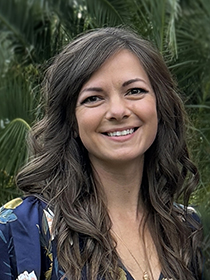
Abstract
Fishes have evolved the ability to produce bioluminescence at least 27 independent times. This light is produced either endogenously via light-producing cells or symbiotically via a relationship with bioluminescent bacteria housed and maintained in specialized light organs. The majority of bioluminescent lineages of fishes are found in the deep sea (areas below 200 m depth). The adaptive significance of bioluminescence in these deep-sea fishes includes camouflage, predation, predator avoidance, and communication. Across the tree of fishes, bioluminescent organs vary greatly in their size and shape, in their light intensity and color, and in their location and number. The variation in the anatomy and morphology of light producing organs across deep-sea fishes continues to be an understudied avenue of research in our pursuit of knowledge regarding fish evolution and adaptation in the deep sea. Using a combination of methods and techniques, including dissecting and histology, I describe variation in the anatomy and morphology of light organs in previously uninvestigated species of deep-sea fishes.
Host: Trenton Franz
Speaker's Bio
Rene is an Assistant Professor in the School of Natural Resources at the University of Nebraska - Lincoln. She earned her B.S. and M.S. in Ecology and Field Biology from St. Cloud State University (MN) and her Ph.D. from the University of Kansas (KS). Although her B.S. and freshwater fieldwork experience lies in the realm of natural resources and fisheries, her research focuses on studying the evolution and diversification of deep-sea fishes. Specifically, she answers questions pertaining to the evolution of lanternfishes (Myctophidae) and other deep-sea fish lineages. Her work includes creating phylogenetic hypotheses of genus-level relationships and uses them as frameworks to investigate evolutionary questions related to evolution and diversification. She is also interested in exploring the morphological changes within a phylogenetic context.
Speaker's Contact Information
- rmartin52@unl.edu
Video
Resource stoichiometry and nutrient form influences growth and cyanotoxin quotas in diverse cyanobacteria
Main Speaker: Nicole Wagner
Assistant Professor , Oakland University | Biological Sciences
Date: 10/30/2024
Time: 3:30 PM
Location: 107 South Hardin Hall (Auditorium)

Abstract
Elements and energy are the building blocks required to create organisms, populations, communities, and ecosystems. Since elements are conserved between the abiotic and biotic environment, they can be used to track changes from the sub-cellular to ecosystem scales. In this seminar, Dr. Wagner will explore how anthropogenic nutrient enrichment and the imbalance of nitrogen to phosphorus ratios affects the eco-physiology and cyanotoxin concentration and quotas in cyanobacteria bloom-forming genera. This topic will be explored at different scales from manipulative controlled laboratory experiments to whole ecosystem high-frequency monitoring.
Host: Jessica Corman
Speaker's Bio
Nicole completed her BS (2007), MS (2009), and Ph.D. (2015) at Trent University in Peterborough, Ontario, Canada. Her doctoral research focused on identifying physiological traits in zooplankton that are indicative of nutritional stress. After her Ph.D, she worked as a postdoctoral associate at the University of Toronto, Canada, Cornell University NY, and Baylor University TX. In the fall of 2022, Nicole joined the Biological Sciences Department at Oakland University as an Assistant Professor. Much of her research interests revolve around how anthropogenic stress affects organisms and ecosystems.
Speaker's Contact Information
- nicolewagner@oakland.edu
Video
Assessing the Responses of Caribou to Changing Habitat Conditions in the Arctic
Main Speaker: Heather Johnson
Research Wildlife Biologist , Alaska Science Center | US Geological Survey
Date: 11/6/2024
Time: 3:30 PM
Location: 107 South Hardin Hall (Auditorium)
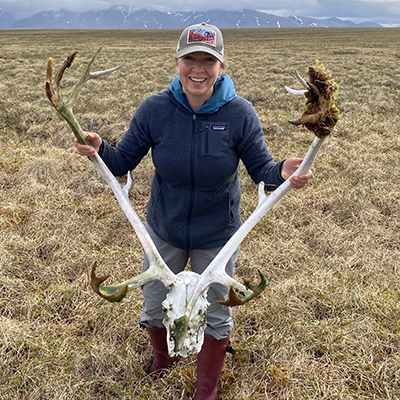
Abstract
Recent declines in most barren-ground caribou herds across North America have coincided with the ‘greening of the Arctic’, raising concerns about the influence of changing summer habitat conditions on caribou populations. The short Arctic summer provides caribou with important forage but is also the time they are exposed to intense harassment by insects, factors which are both being altered by longer, warmer growing seasons. Additionally, the summer ranges of barren-ground caribou in Alaska often overlap areas targeted for energy development, compounding concerns about the resilience of caribou to changing conditions. This talk will highlight recent research by USGS and our partners to better understand the influence of summer habitat and human development on caribou behavior and demography in the Alaskan Arctic, with implications for how populations may be impacted in the future.
Host: Sarah Songsthagen
Speaker's Bio
Heather Johnson is a Research Wildlife Biologist at the USGS Alaska Science Center in Anchorage, Alaska. Heather has a PhD in Wildlife Biology from the University of Montana, a MS in Wildlife Science from the University of Arizona, and a BS in Ecology from the University of California, San Diego. Heather’s research primarily focuses on understanding how climate- and anthropogenic-driven changes in habitat conditions influence the behavior and demography of large mammals, and the effectiveness of management strategies for minimizing impacts. Prior to working for the USGS, Heather conducted research for Colorado Parks and Wildlife and California Department of Fish and Wildlife.

Speaker's Contact Information
- heatherjohnson@usgs.gov
Eurasian lynx (Lynx lynx) foraging ecology across Europe
Main Speaker: Teresa Oliveira
Wildlife Ecologist , University of Ljubljana, Slovenia
Date: 11/13/2024
Time: 3:30 PM
Location: 107 South Hardin Hall (Auditorium)

Abstract
Europe hosts diverse habitats and environmental conditions, with increasing populations of large carnivores. The Eurasian lynx (Lynx lynx) is a large solitary felid of conservation concern, and a top predator in European landscapes. Many lynx populations, particularly in Central Europe, have suffered from severe inbreeding in recent decades, prompting several reintroductions and population augmentation efforts. I will begin by providing an overview of the status of lynx populations across Europe, as well as presenting the outcomes of a recent, successful reinforcement project in the Dinaric Mountains of Slovenia and Croatia. While conservation efforts continue, initiatives are also underway to combine and standardize datasets across Europe, advancing our understanding of Eurasian lynx ecology. I will be presenting some of the work developed within these initiatives related to lynx foraging ecology across Europe. We show that foraging parameters varied significantly between populations and with respect to multiple ecological factors on a pan-European scale. Lynx showed high adaptability to such factors, particularly human disturbance. We also investigated the spatial distribution of kill sites by females in relation to their den sites and found differences between climates and prey species, with females in northern areas generally traveling more to obtain food resources. As one of the main conservation challenges facing the Eurasian lynx is perceived competition with hunters, a deeper understanding of foraging ecology and its drivers is essential for improving lynx conservation efforts and mitigating conflicts with hunting communities in Europe.
Host: John Benson
Speaker's Bio
I have been working with several carnivore species across Europe, from the European wildcat in the Iberian Peninsula, to the grey wolf and Eurasian lynx in Central/Eastern Europe. I have mostly focused on understanding their basic ecology, as well as collaborating on conservation projects. I have recently concluded my PhD at the University of Ljubljana (Slovenia), where I studied Eurasian lynx foraging and spatial ecology at different spatial scales across Europe. I am particularly interested in basic and applied ecology of predators, especially with respect to foraging behaviour and predator-prey interactions.
Video
Exploring the Impact of First-Time Hunters on Satisfaction with Tier II Duck Hunting Regulations
Main Speaker: Maddy Vasquez
MS candidate in Natural Resource Sciences , University of Nebraska-Lincoln | School of Natural Resources
Date: 2/19/2025
Time: 12:00 PM
Location: 901 South Hardin Hall

Abstract
Waterfowl hunting has long been essential for funding conservation in the United States, but fewer people are participating now than in previous decades. In an effort to reverse this decline, wildlife agencies in South Dakota and Nebraska introduced the two-tier duck hunting regulation designed to make hunting more accessible. This new regulation's goal is to simplify bag limits making it easier for first time hunters to begin. This study examines hunters' attitudes toward the two-tier duck hunting regulation, focusing on the experiences and the satisfaction of first-time hunters as compared to those with more experience. We analyzed survey responses from 418 participants across Nebraska and South Dakota, using ordinal regression to assess satisfaction across seven area components, including how easy it was to enroll for Tier II, report harvests, and comply with regulatory requirements. Our findings indicate that first-time hunters were more satisfied overall than their more experienced counterparts, especially regarding harvest reporting and regulatory compliance. Analysis of satisfaction levels among a population with diverse experience levels highlights these positive experiences and reinforces the importance of considering first-time hunters when making management decisions. Agencies can create a welcoming environment for first-time hunters by making processes simpler and offering support, helping to attract and keep new hunters while preserving the tradition of hunting and the conservation funding it provides.Speaker's Bio
Maddy Vasquez holds a bachelor's degree in Biology, with minors in Natural Resource Management and Chemistry, from Bellevue University. Her experience includes work on plant biodiversity in native grasslands, algae, and plant DNA research. Her research passion centers on understanding how humans connect with the natural world. Maddy is driven by the question of how managers can inspire people to appreciate and contribute to conservation efforts, emphasizing the human role in sustaining natural ecosystems.Video
Species Preferences on Angler Motivational Factors in Kansas
Main Speaker: Sarah Ulrichsen
PhD Candidate in Natural Resources Sciences with a specialization in Human Dimensions , University of Nebraska-Lincoln | School of Natural Resources
Date: 2/19/2025
Time: 12:30 PM
Location: 901 South Hardin Hall
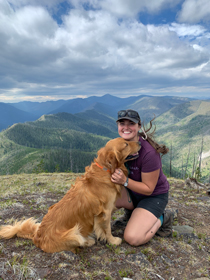
Abstract
Understanding the factors that motivate anglers to go fishing is crucial for effective fisheries management and conservation efforts. People's engagement with fishing is deeply influenced by their motivations—a complex interplay of the needs, desires, and goals that propel people to engage in recreation. We analyzed anglers' motivations to seek their primary species—including trophy fishing, keeping and eating the catch, identity, social interaction, and gear use—across various species preferences, such as Bass, Catfish, Walleye, and panfish. Data were collected via a web-based survey distributed to a stratified random sample of licensed anglers across Kansas. We sent invitations to 7500 licensed anglers and had 771 total responses (a 13% response rate). Preliminary results indicate significant differences in motivational factors when comparing species preferences. Walleye anglers are more motivated by keeping the fish they catch and liking the taste of their preferred species. In contrast, Bass anglers place a much lower value on reaching the bag limit, fishing for nutrition, and keeping the fish they catch. Among all species, anglers placed the most importance on choosing a fishing location because of the presence of their preferred fish species. These results highlight the importance of species-specific management strategies catering to the angling community's diverse motivations. Through understanding differentiated motivations, managers can be provided with critical insights into the importance of various motivational factors of recreational fishing as they relate to sought-after fish species, helping to inform the development of targeted regulations and conservation strategies that address the diverse needs and values of fishing communities in the Midwest.Speaker's Bio
Sarah has a Bachelor's degree in Biology with a minor in history from Central Connecticut State University. Her previous research experience includes looking at the impacts of outdoor recreation on the environment of Northwest Montana where she has worked in the past. Sarah strives to better understand why people choose to participate in outdoor recreation, especially recreational anglers. She is currently studying social and economic valuation of anglers in Kansas in the Human Dimensions Lab with advisor Dr. Chris Chizinski.Video
Biology and Conservation of Nurse Sharks (Ginglymostoma cirratum) from Bimini, The Bahamas
Main Speaker: Baylie Fadool
Graduate Teaching Assistant , University of Nebraska-Lincoln | School of Natural Resources
Date: 2/26/2025
Time: 12:00 PM
Location: 901 South Hardin Hall
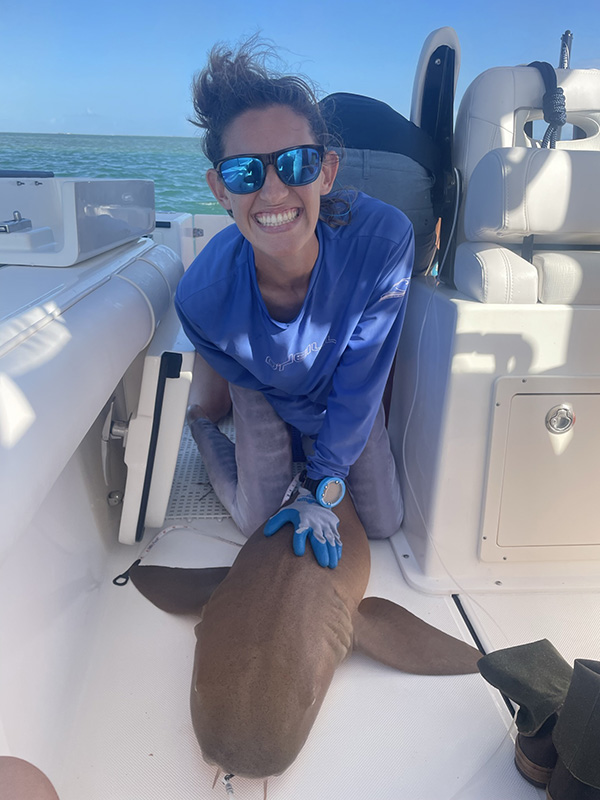
Abstract
The nurse shark (Ginglymostoma cirratum) is abundant in coastal waters of the Atlantic Ocean, yet they remain relatively understudied, aside from their reproductive behavior. Previously listed as ‘data deficient’ by the International Union for Conservation of Nature (IUCN), their status was updated to ‘vulnerable’ in 2021. This recent status update indicates additional research on this species is critical. Nurse shark populations in The Bahamas present an ideal study system as there are long-term datasets available for investigation on their morphometrics, movements, and genetics. To assess the age and growth of this species, we used mark-recapture data of 91 individual nurse sharks from Bimini, The Bahamas, and found that nurse sharks are slower-growing and longer-lived than previously thought, with the oldest individual predicted to be 43 years old. A long-term acoustic monitoring program of shark species in Bimini has additionally revealed that nurse sharks are capable of making long-distance migrations with evidence of repeated return migrations back to Bimini. In lieu of these discoveries, combining genetics with telemetry data has become increasingly important in fisheries management to assess population connectivity and diversity within species. Using over 350 samples of nurse shark tissues from The Bahamas, we aim to determine the population structure of nurse sharks in this area to help contribute crucial information to the conservation of this ‘vulnerable’ species.Speaker's Bio
Baylie Fadool is a master's student and teaching assistant in The Lamp Lab with Dr. Rene Martin. She received her bachelor's degree in biological sciences from the University of Nebraska-Lincoln (UNL) in December 2020. Following her graduation, she got an internship at the Bimini Biological Field Station Foundation (BBFSF) that turned into a 3-year position as the Media Manager and Outreach Coordinator. In these positions, she did underwater photography for BBFSF, ran and designed most of the education programs, and assisted with all research activities while also publishing her own research on nurse shark age and growth. Baylie continues to collaborate with BBFSF now for her master's project investigating the population genetics of nurse sharks in The Bahamas. At UNL, Baylie is also involved in the School of Natural Resources Graduate Student Association and UNL Fisheries Club.Speaker's Contact Information
Video
Community Engagement to Mitigate Transmission of Infectious Diseases and Antibiotic Resistance from Backyard Poultry
Main Speaker: Nafisa Lubna
PhD Candidate in Natural Resources Sciences , University of Nebraska-Lincoln | School of Natural Resources
Date: 3/12/2025
Time: 12:00 PM
Location: 901 South Hardin Hall

Abstract
Backyard poultry production is growing globally with 85 million backyard chickens estimated in the U.S. Whether kept as pets or to provide a local and sustainable food source, flocks can harbor pathogens and antibiotic-resistant bacteria that can be transmitted to humans via the environment, pests, food products, and direct contact. Poultry waste can contaminate soil and water sources, posing risks to nearby humans and other animals. Flocks can attract pests that may carry diseases and disrupt local ecosystems. This project, which will launch in the summer of 2025, aims to improve understanding among backyard poultry farmers of potential health, environmental, community, and food safety risks associated with their systems and motivate the adoption and promotion of behaviors critical to public health and sustainability of local food systems using a peer-to-peer outreach approach.Speaker's Bio
Nafisa Lubna, is an environmental biochemist originally from Bangladesh and currently a second-year PhD student at SNR. She specializes in applied ecology and her research encompasses molecular diagnosis of emerging bacterial infections, zoonosis, root cause identification, and environmental risk factor analysis from poultry and live bird production. She is learning to use health extension in preventing antimicrobial resistance and other infectious diseases working together with Nebraska Extension, and Nebraska One Health.Speaker's Contact Information
- nlubna2@unl.edu
Video
Advancing Precision in Farmland Segmentation: Open-Source Methodologies and Applications
Main Speaker: Noah Berkowitz
PhD Candidate in Natural Resources Sciences , University of Nebraska-Lincoln | School of Natural Resources
Date: 3/26/2025
Time: 12:00 PM
Location: 901 South Hardin Hall

Abstract
Segmenting corn fields in Nebraska presents a significant research-intensive challenge. With over 2.5 million acres under cultivation, achieving spatiotemporally precise cropland data demands extensive investigation and analysis. This presentation will critically examine the open-source methodologies employed to generate and apply these datasets, highlighting the datasets and the analytical tools developed for their creation. In addition, the talk will briefly address the roles of OpenStreetMap and the Humanitarian OpenStreetMap Team in advancing the accessibility and accuracy of spatial data within agricultural research and the broader geospatial community.Speaker's Bio
I am a PhD candidate in geography from the New York/New Jersey area. My research utilizes remote sensing data and Geographic Information Systems (GIS) analyses to investigate dryland corn agriculture in Nebraska. I collaborate with the United States Department of Agriculture (USDA) and several private entities to explore issues related to crop yield, profitability, and the dynamics of agricultural land use change.Video
Tracking Agrochemical Contaminants in Aquatic and Terrestrial Environments Using Tadpoles and Songbirds as Sentinels
Main Speaker: Shabani Muller
PhD Candidate in Natural Resources Sciences , University of Nebraska-Lincoln | School of Natural Resources
Date: 4/2/2025
Time: 12:00 PM
Location: 901 South Hardin Hall
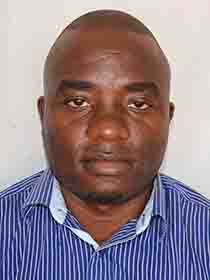
Abstract
Agrochemical contamination poses risks to human, animal, and ecosystem health. The AltEn Ethanol plant in Mead, Nebraska, processed pesticide-treated seed products until 2020, leading to contamination of surrounding water and land. In 2021, researchers collected American Bullfrog tadpoles from surface water and songbird eggs from farmland/wetlands to assess agrochemical presence. Using advanced chromatography techniques, they detected neonicotinoid pesticides (clothianidin, thiamethoxam) in 21.21% of samples, with concentrations ranging from 3.2 to 315.4 ng/g. Fungicide residues (including atrazine and its derivatives) were found in 32% of samples. Tadpole analysis revealed neonicotinoid detection in 12.4% of cases, with thiamethoxam reaching up to 8,908.8 ng/g, while fungicides were detected in 36.5%, with concentrations up to 116.2 ng/g. The highest pesticide levels were found near the AltEn facility and downstream sites. Results confirm that tadpoles and songbird eggs serve as effective wildlife sentinels for agrochemical exposure. The study expanded in 2022–2024 to analyze spatial and temporal contamination trends.Speaker's Bio
I am a fourth-year Ph.D. student in Applied Ecology at the University of Nebraska-Lincoln, School of Natural Resources. My research centers on One Health, an interdisciplinary approach connecting human, animal, and ecosystem health. With 20 years of experience as a research laboratory scientist in tropical infectious diseases, I now focus on ecosystem health, studying the impacts of agrochemicals on human and animal health in Nebraska.Speaker's Contact Information
- shabanikmuller@gmail.com
Video
Identification of landscape features that may facilitate or impede gene flow among habitat patches within Wild Turkeys in Nebraska and Kansas
Main Speaker: Deepika Garugu
PhD Candidate in Natural Resources Sciences with a specialization in Applied Ecology , University of Nebraska-Lincoln | School of Natural Resources
Date: 4/9/2025
Time: 12:00 PM
Location: 901 South Hardin Hall

Abstract
Behavioral, ecological, and evolutionary process shape the spatial distribution of genetic diversity. Variation in behavioral and life history traits may have important consequences for the structuring of genetic variation across landscape. Assessments of genetic parameters can help identify populations, prioritize areas for conservation, identify barriers and corridors to movement, thereby informing management actions. The wild turkey (Meleagris gallopavo) is an upland game bird native to North America that has experienced declines throughout much of its range. Among some states, reintroduction efforts were carried out in the mid-1900s to bolster remanent or extirpated populations. Our research aims to evaluate the spatial arrangement of genetic diversity and identify features that may facilitate or impeded dispersal across the landscape. We collected reduced representation genomic sequence data (ddRAD) from wild turkeys sampled at 8 sites across North-west (NW) and South-west (SW) in Nebraska and 13 sites in across Eastern, Central and Western Kansas when birds are in winter flocks (Jan – Mar) on 338 individuals and isolated 5355 loci. We applied two complementary approaches with different underlying assumptions to evaluate spatial genetic structure: (1) principal components analysis (PCA, nonparametric method) and (2) fineRADstructure (shared co-ancestry). The patterns in genetic diversity were similar across analyses, individuals clustered into 4 groups based on geographic region with NW Nebraska, SW Nebraska, eastern Kansas and central and western Kansas. Within each region, subtle structure was detected based on co-ancestry analysis. We identified genetic structuring with limited gene flow between the NW and SW regions of Nebraska. We also uncovered evidence of gene flow between the SW region of Nebraska and the western and central sites in Kansas, suggesting greater connectivity between these populations. Spatial genetic structure detected among sample sites may be influenced by factors such as habitat continuity and dispersal behavior. The observed genetic differentiation is likely shaped, in part, by landscape features. These findings provide valuable insights into the population connectivity and genetic structure of wild turkeys in Nebraska and Kansas that benefited from translocation efforts, which can inform conservation and management strategies aimed at maintaining genetic diversity and connectivity across the landscape.Speaker's Bio
I am Deepika. Did my bachelors from India and masters from Auburn University. My masters program was on mollusks and arthropods and my thesis was focused to understand extinction risk in aquatic invertebrates using range size and genetic diversity. Now here for my PhD working on wild turkeys and in the final year of getting samples from field. My hobbies are hiking, bird watching and bird photography.Speaker's Contact Information
- sgarugu2@huskers.unl.edu
Video
Assessing Spatial and Temporal Variation in Photoprotective Responses of Deciduous and Evergreen Tree Canopies with Leaf Spectroscopy
Main Speaker: Alec Piper
Graduate Research Assistant , University of Nebraska-Lincoln | School of Natural Resources
Date: 4/16/2025
Time: 12:00 PM
Location: 901 South Hardin Hall
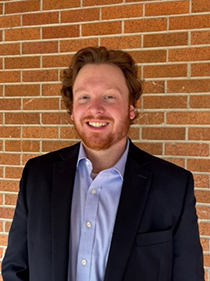
Abstract
Environmental conditions frequently prevent photosynthetic carbon fixation by plants, leading to the absorption of excess light that can potentially damage photosynthetic machinery if not dissipated. To do so, plants utilize a variety of photoprotective mechanisms, some optically detectable with remote sensing using Photochemical Reflectance Index (PRI). The two components of PRI have been associated with the facultative engagement of the xanthophyll cycle (ΔPRI) and constitutive changes in chlorophyll and xanthophyll pigment pool sizes (PRI0), representing distinct mechanisms regulating shorter and longer-term photoprotective responses, respectively. This study aimed to assess the variation in the expression of facultative and constitutive photoprotective mechanisms within and between canopies of six deciduous and evergreen tree species across the growing season, and how this variation is structured by trade-offs in leaf function related to leaf lifespan and insolation. We quantified species pigment responses by exposing dark-adapted leaves to high irradiance (“dark-to-light” method) while sampling reflectance to measure constitutive (PRI0) and facultative (ΔPRI) responses. Reflectance measurements were also collected in situ on leaves from canopies under low (“shade”) and high (“sun”) irradiance conditions to derive both constitutive and facultative PRI-light responses. Deciduous and evergreen species had contrasting PRI0 and ΔPRI values at mid-growing season, reflecting differences in both constitutive investments in photoprotective pigments and facultative xanthophyll cycle engagement. Towards the end of the growing season, PRI0 and ΔPRI shifted more dramatically for deciduous species undergoing leaf senescence than evergreens that retained their leaves. PRI-light responses derived from canopy positions in contrasting irradiance conditions resembled differences detected among functional groups using the dark-to-light method, demonstrating the utility of canopy light gradients for evaluating the constitutive and facultative PRI components at the leaf-level. Our results indicate that deciduous and evergreen species have distinct, seasonally dynamic photoprotective strategies, likely related to different functional constraints tied to leaf lifespan. The identification of coordinated strategies in photoprotection and photosynthesis may improve the ability to distinguish photoprotective mechanisms operating dynamically under different environmental conditions in functionally diverse communities.Speaker's Bio
Alec Piper is a master’s student at the University of Nebraska-Lincoln, working in the Center for Advanced Land Management Information Technologies (CALMIT) under Dr. John A. Gamon and Dr. Sabrina E. Russo. He earned his bachelor’s degree in biological sciences from Doane University in December 2020. Alec’s master’s research focuses on the variation in photoprotective pigment responses among trees using proximal remote sensing. Studies investigating variation in species’ photoprotective strategies, aimed at better understanding the mechanisms regulating photosynthesis and photoprotection, can enhance the ability to monitor plant stress in forest communities with remote sensing technology.Speaker's Contact Information
- apiper3@huskers.unl.edu
Video
From Pixels to Pastures: A Remote Sensing Perspective on Sandhills Complexity
Main Speaker: Catherine Chan
PhD Candidate in Natural Resources Sciences , University of Nebraska-Lincoln | School of Natural Resources
Date: 4/23/2025
Time: 12:00 PM
Location: 901 South Hardin Hall

Abstract
Remotely sensed metrics have been used to estimate diversity and heterogeneity in vegetation however, these estimations can also be influenced by other factors such as abiotic variables. It is understood that topography and climate shape species composition and distribution (biodiversity), thus influencing spectral reflectance and confounding the relationship between remotely sensed metrics and vegetation diversity. Understanding the interactions among these variables is important to accurately estimate biodiversity using remote sensing. This presentation assesses some of the relationships between spectral data, landscape characteristics, species composition and distribution, and management (prescribed burning and cattle grazing).Speaker's Bio
Catherine is a 5th year PhD candidate under Drs. John Gamon and Daniel Uden. She holds a BS in Marketing from Boston College and an MS in Forest Ecosystems Sciences from the University of Maine. In between her undergraduate and graduate education, she worked at a biotech in Cambridge, Massachusetts as an administrative assistant where she feels she gained an interesting perspective on a lot of complexities between science and administration.Speaker's Contact Information
- cchan5@huskers.unl.edu
Video
Comment: The video of this presentation was not recorded properly. We present the audio portion of the presentation and the PowerPoint slides associated with the presentation.
You Go Over, I Go Under: A Study of the Coyotes, Badgers, and their Prairie Home
Main Speaker: Emma Balunek
MAS Candidate , University of Nebraska-Lincoln | School of Natural Resources
Date: 4/30/2025
Time: 12:00 PM
Location: 901 South Hardin Hall
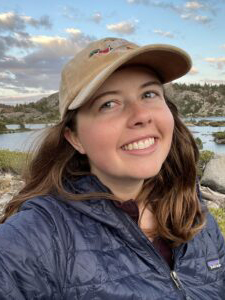
Abstract
Cooperative foraging is a long-standing, central component of animal behavior. Cooperation occurs relatively commonly within the same species (intraspecific) as well as across species (interspecific), although much more rarely. Across western North America, coyotes and American badgers sometimes work together to hunt prairie dogs and ground squirrels using their complementary hunting skills. Badgers are excellent diggers and usually hunt belowground, digging up burrows searching for small mammals. Coyotes are opportunistic hunters that seek a wide variety of prey and mostly hunt aboveground. When coyotes and badgers work together, burrowing mammals, such as prairie dogs, are not safe above or belowground. If a coyote chases a prairie dog into its burrow, the badger has an opportunity to capture the animal, and if a prairie dog escapes the badger and comes aboveground, the coyote has an opportunity to catch it. Although this relationship is described by Indigenous people and early European settlers dating back to at least the 19th century, little research has been done to understand the circumstances in which these two carnivore species work together. To expand on the handful of recent studies, my project focuses on the spatial and temporal environmental conditions that influence when coyotes and badgers are together in prairie dog colonies. We conducted a broader study across five sites in South Dakota, Wyoming, Colorado, and New Mexico. We predict that detection of coyote-badger associations increases closer to large colonies of colonial and semi-colonial burrowing mammals (P1). We also predict that detection of coyote-badger associations decreases closer to human disturbance, as both species may prioritize avoiding risk from humans over foraging success (P2). In our preliminary results, we are noticing most associations occur within prairie dog colonies. Temporally, we predict that detection of coyote-badger associations is lowest when both species are raising offspring (spring-summer), given that young offspring would be vulnerable to interspecific predation (P3). Preliminary results indicate higher coyote-badger detections in the fall. Finally, we predict that detection of coyote-badger associations is highest during nocturnal and crepuscular periods when both species are most active and more likely to be foraging (P4). Preliminary results suggest a diurnal trend in coyote-badger association during the day. Coyotes have a long history of misunderstanding since white European settlers arrived in America. Badgers are thought to be mean, vicious animals. Prairie dogs are also disliked because their burrowing habits potentially interfere with agriculture and cattle. I will share what I learned from our research about the coyote-badger relationship and their larger prairie ecosystem home through short videos, photos, and an all-encompassing online Storymap to create fascination and wonder about these species and the unique relationship they form with one another. Ultimately, I hope my project will shine a light on the overlooked and endangered grasslands and the species that call it home.Speaker's Bio
Emma is a master’s student at UNL working with Michael Forsberg, John Benson, and Platte Basin Timelapse studying the coyote-badger hunting relationship in prairie dog colonies across the west. Through this project, she is contributing new scientific and behavioral insights about this intriguing relationship while also communicating the story to a diverse audience through high-quality photos and video; ultimately shining a light on the often-overlooked grasslands.Speaker's Contact Information
Video